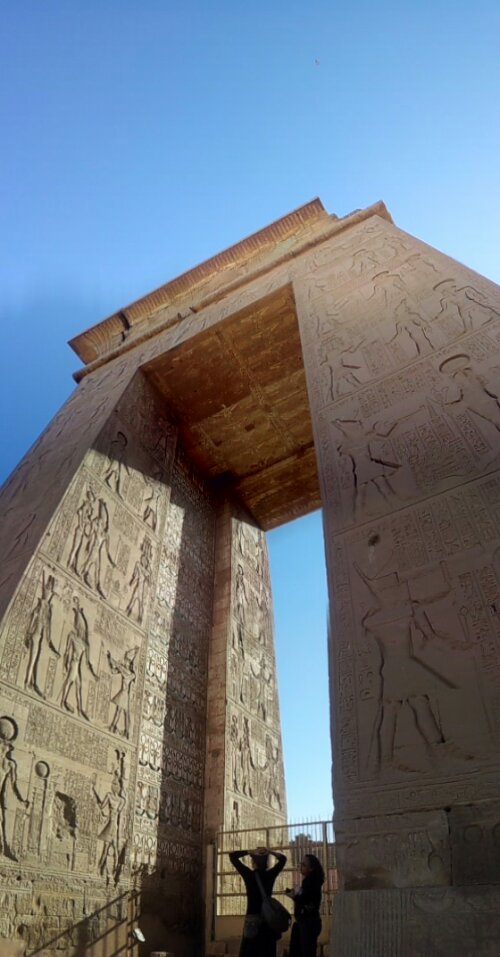

His other passenger showed up – an old woman whose name I don’t think I ever got. She looked ancient, had on a Rasta colored knit beret, pink shawl, and black and fluorescent green striped socks and hobbled over to the cab, with Sabet holding her arm which made him suddenly look genuinely young (well, younger). People like that remind me that the older I get the less I will really care about what people think of me and I’ll just wear whatever makes me happy – even if it doesn’t match. She climbed into the front seat and little old Sabet seemed to treat her with a youthful deference. Sabet told her how I was on my way to the same place she is – to see the old Coptic churches in the ancient walled in area of Cairo which was first built around 300 AD.
Oh, she says, hard of hearing, you are a Coptic? and thus began an entirely one-sided conversation. I am generally soft spoken and having to yell while the noisy little car chugged down the highway across the Nile and into Cairo didn’t help me get any relevant points across. On the drive she told me that she was 92 years old, was traveling, visiting Coptic Christian sites, was from Australia.
Was I with the group of young people at the hotel, she shouts back to me.
Yes I am, I responded.
I met the fellow with the feather in his top hat – do I know him? She asks – no? – Well, he was from her hometown in Australia and he was also a con artist. It’d be best for me to avoid him. People from there are generally con artists, she said.
Sabet dropped me off at the souq opposite the Coptic area. Would I like a ride back as well, he asked just tell him what time. It was 11:30 so I tell him 4:30 which seemed reasonable. It also made things easier. He was honest, reliable, and a bit garrulous in a sweet way – and proud of his good English. along the way he told me how everything has changed since the lution. Oh the lution this or that. the lution! what’s a lution, I asked. The lution he shouted…. and it went like that for a bit til I realized he meant the Revolution. And Australia chuckled at his ‘good English’.
So I left Sabet and wandered into the main road that ran along the wall of the Coptic area. It’s heavily policed – this is, after all, a sacred site to the Coptic Christians. Egypt is predominantly Muslim and acts of terrorism are not uncommon. I even passed through a metal detector when I entered a synagogue there – with the guard asking me if I had any bombas (I have often been mistaken for being Spanish… perhaps it’s all the southern Californian mixed with my Italian blood).

The Coptic Christian area was a maze of ancient churches – dating back to the 9th or 10th century – that sat within he boundaries of an even more ancient Roman wall. The remains of that date to the 3rd c. Still, after seeing things twice as old, it suddenly didn’t seem as old. Ah well, perspective… In Coptic Cairo, in the maze of walk streets which you got to via walking down a flight of stairs from the current street level, there was the Nunnery of St. George with St. George slaying the dragon carved over their great thick wood door and within there one could find a beautiful mosaic of the same. There were huge old wooden doors meant to keep out marauders, old rough hewn stones and lintels with Christian knotworks and Coptic crosses carved in them. I wandered in and out of churches that dated back centuries and were so small and beautiful – walls and altars of wood designs with inlaid carved bone (?) or ivory and sweet old men tending them. In most churches there were relics of saints wrapped in clothes. a tooth? a toe? Who knows. People prayed before them, hoping for a blessing from the tooth of Saint such and such.
The Coptic Christians are a segment of Christianity. They are considered the native Christians of Egypt and have some beliefs that vary with other sects of Christianity. The Copts, as they are known, were the major religion of Egypt from 300 to 500 AD before the Muslims invaded and dominated. Coptic Cairo is interesting because of it’s age, historical context, and the fact that it has some beautiful gems of architecture and art.